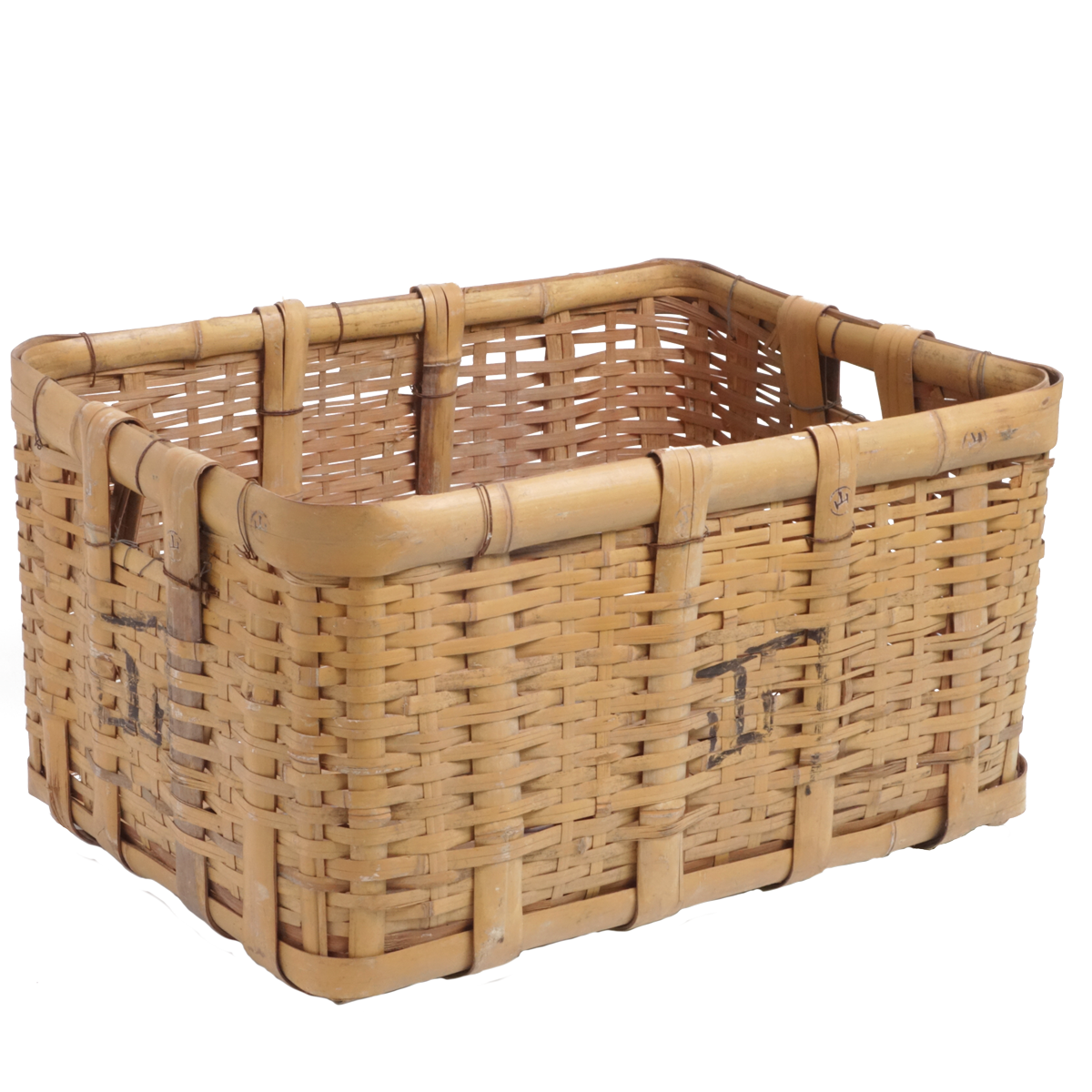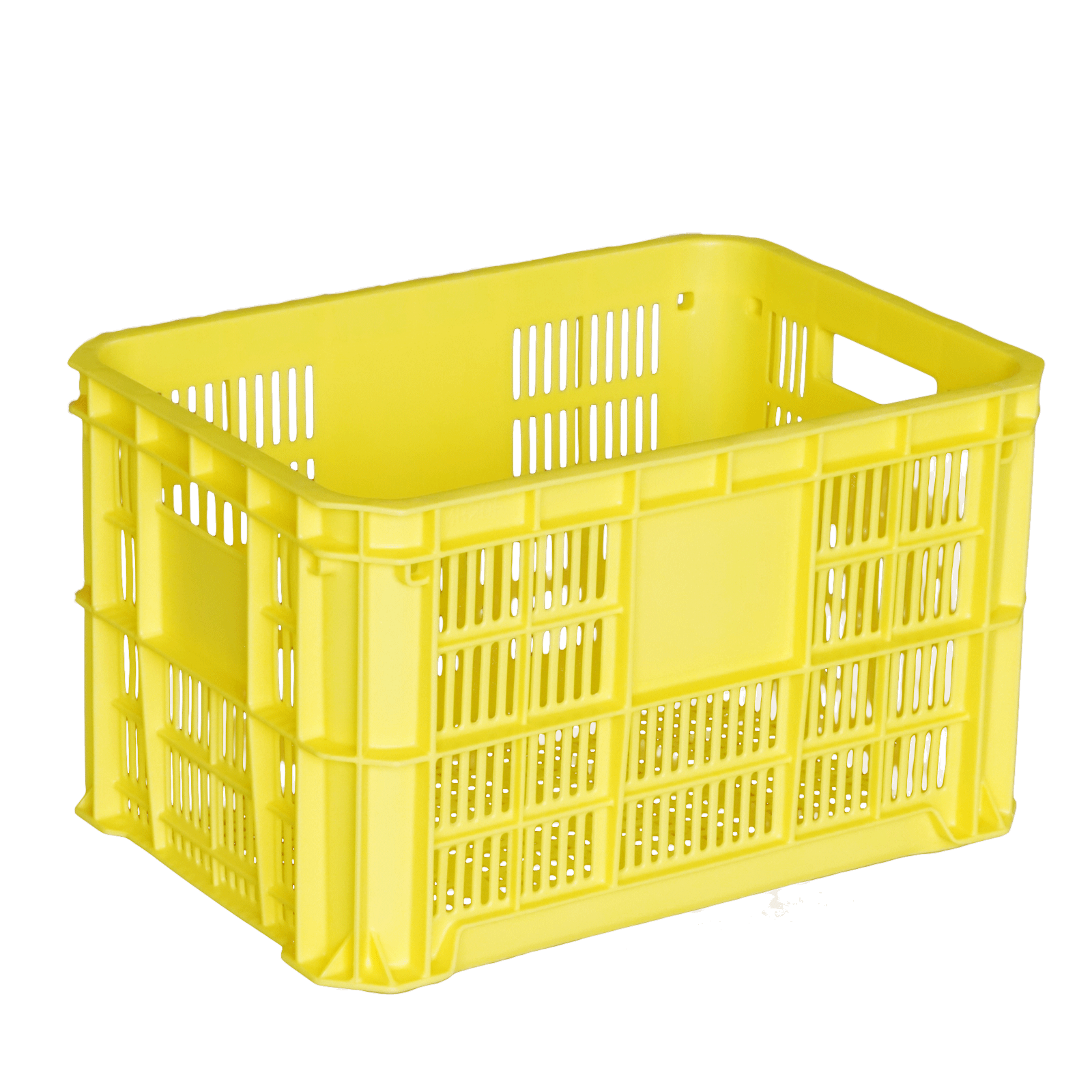- 材の名前
- crate



Bamboo baskets used until plastic crates became popular.
In satoyama, in which we live, each household owns farmland and all families are engaged in agriculture, despite the size of the farm and the crops they grow. Crates are an indispensable material for farming. In the past, bamboo baskets were used, but they have been completely replaced by plastic crates.
The crates available at JA (Japan Agricultural Cooperatives) weigh just 2 kg, and when shipping, the weight of each crate is weighed against the weight of the crop.
Yellow is the most common colour, but bright blue crates are also common these days, and red and orange can also be seen. If you order a certain number of crates in bulk, you can have your name or business name on the side, or order a different colour.
Although at first glance they appear to be the same crate, several different types exist in terms of the shape of the bottom. Two types are mainly used here: those with a mesh-like grid bottom suitable for drying the contents, and those with a closed bottom but with drainage holes. If ventilation is not particularly necessary, the latter type, which is sturdier, should be chosen. The lattice shape is less sturdy, but it is more ventilated and when turned over and sat on, it acts like a cushion and was comfortable to sit on.
Crates are not only used for transporting goods, but are also used in a variety of ways, sometimes as a seat, sometimes as a bench with a plank across two. They can be used to sit on for a break from work, and when a large group of people are launching, the crates can be quickly brought out and turned into chairs, tables and beer crates. The versatility of crates always amazes us.

